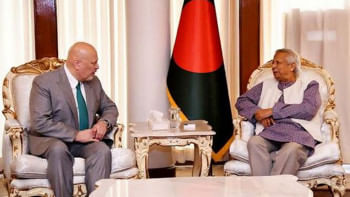Tandoors from all over the world


Although most of the world knows the word 'Tandoor' by now, let me give a brief description of it, even if just to make this read a little more technically sound. A tandoor is a cylindrical clay oven used in cooking and baking. The tandoor is currently a very important fixture in many Indian restaurants around the world. Originally devised for baking bread, the high searing heat plus the moisture-retaining properties of the tandoor oven make it equally effective for cooking meat and fish.
The heat for a tandoor was traditionally generated by a charcoal fire or wood fire, burning within the tandoor itself, thus exposing the food to both live-fire, radiant heat cooking, and hot-air, convection cooking. Temperatures in a tandoor can approach 480 °C (900 °F), and it is common for tandoor ovens to remain lit for long periods of time to maintain the high cooking temperature. Some modern day tandoors use electricity or gas instead of charcoal.
The tandoor cooking uses four distinct techniques. Direct heat rises from the charcoal, a process akin to grilling. The hot clay walls of the oven bake bread in a way similar to griddling or skillet-roasting. Radiant heat in the belly of the tandoor produces results similar to convection baking. And smoke, which occurs as the marinade and meat juices drip onto the hot coals, adds fragrance and flavour. But it's more than just that – marinating is the key to developing exceptional flavour. Ingredients cooked in a tandoor are marinated, usually twice, in special aromatic marinades to flavour and tenderise. Some of these marinades have more than 30 ingredients in them! The marinated meat or fish are then threaded onto specially designed skewers, lowered into the tandoor oven and cooked at temperatures as high as 350°C. The meats cooked in a tandoor are generally more moist and more tender than those cooked by any other method. In addition, they have a special earthy aroma absorbed from the clay lining of the oven. The end results are dishes packed with complex flavours you just can't duplicate at home in a pan.

Today tandoor has become one of the most popular cooking mechanism in around the world. But little do we know that tandoor is used for cooking in Turkey, Iran, Pakistan, Afghanistan, the Trans-Caucasus (Georgia), the Balkans, the Middle East, Central Asia as well as China, India and Bangladesh.
The oldest examples of a tandoor were found from 4000 BC in the Harappa and Mohenjodaro settlements of the ancient Indus Valley Civilization. Circular ovens dot the Indus Valley sites. The ones in Mohenjodaro were massive, with firing sections placed below the ground.
Iranians call it tanoor; Uzbeks, tandyr; Azerbaijanis, tandir; Armenians, tonir; and Georgians call it tone.
Let's walk the road of tandoor's conquest of the world!

EUROPE
By a strange coincidence, in Zurich there is a traditional clay cooking pot called the Romertopf, which is more like a make shift tandoor. The Romertopf is small and has to be put in an oven with the cover dish. As the romertopf heats up, it imparts a wrap around heat similar to that in a tandoor. The dripping falls at the bottom of the dish and keeps the meats soft and juicy.
CAUCASUS (GEORGIA)
In the Caucasian region, the oven called Tone resembles the Tandoor and also works on the same principle. It is made of bricks and measures three feet across and four feet in depth. The dough is usually patted into an elongated shape and called shoti, placed in the Tone and baked till it is golden brown. The tone takes around one and a half hours to reach the required temperature for baking the bread.
Removing the bread from hot clay oven requires considerable skills as well, so the baker of 'shoti' should be experienced professional in this field. With a long-handled hook in one hand and a kind of scraping tool in the other, they carefully take each piece of bread and flip them onto a rack.


UZBEKISTHAN
Its known as 'Tandir' in Uzbek. The traditional dish of Uzbek, obi-non, the bread is light and fluffy with a chewy crust when served hot. Coal and firewood are placed in a tandir and it is heated for several hours. The walls of the tandir are sprinkled with salt water so that the ready-made cakes are easily separated, and bread dough is put on them. Hot walls are abundantly sprinkled with water to make the dough cooked for a couple of minutes.

The word "non" comes from Persia, where it is sometimes transliterated "naan". And nonvoy is the bread baker. I guess the word is from Urdu, one of the ancient language of the world, where it should mean 'naan bhai', the friendly brother who makes naan. Making non starts with an old cast-iron bathtub full of bubbling xamir (pronounce it as khamer)—a sourdough prepared the night before. In the Uzbek bread bakery, as a rule, only men work. It's very interesting to watch the process. In order to make the work fast, and create minimum fuss in a closed environment, work in a bakery is like a conveyor. One rolls balls of dough, the second forms cakes from them applying the traditional perforated designs with metal stamps called chekich and then follows this with a pattern of spoke-like indentations, and the other brushes the flattened dough with oil that would give it a golden colour, sprinkles it with sesame seeds and finally, coats it with powdered milk mixed with water for taste and deftly throws the cakes into the oven (tandir). On an average day, each non-voy bakes some 50 large loaves and about 425 smaller loaves.






Comments